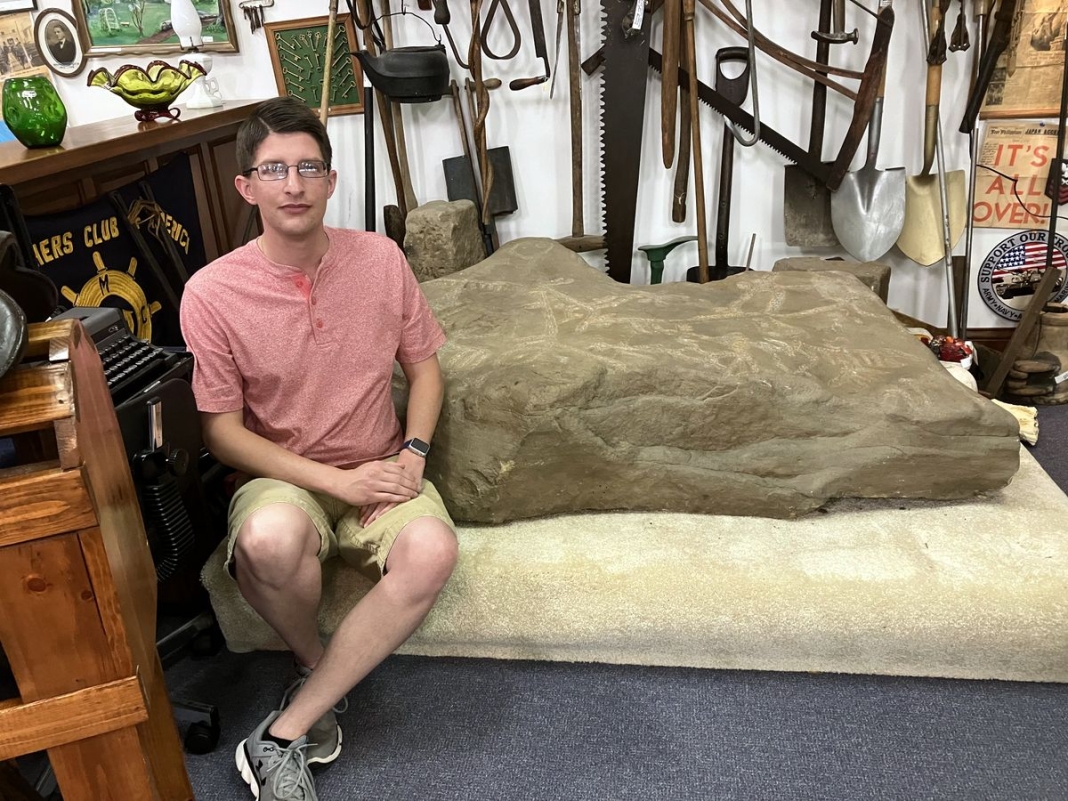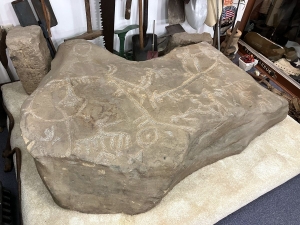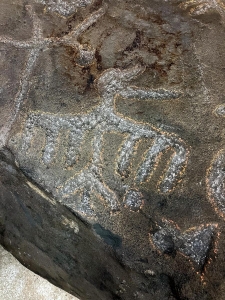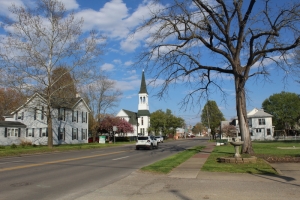CEREDO, W.Va. — On the south side of Main Street in the Town of Ceredo, West Virginia, a small community along the Ohio River in Wayne County, the Ceredo Historical Society Museum is home to a remarkable artifact.
The modest, one-room structure at the end of a row of houses is a vital repository for local history. Its displays contain old documents, high school memorabilia, handblown glassware, and other eclectic artifacts.
Most visitors, however, are quickly drawn to the massive sandstone boulder beside the front desk —the Ceredo Petroglyph.
As it has come to be known, the Ceredo Petroglyph measures three feet by six feet and weighs upwards of a thousand pounds. The top features around a dozen carvings of different symbols. They appear to depict four birds, a turtle, some humanoid or mammalian figures, and some indeterminate geometric designs. Left behind centuries ago by Native Americans, one can only guess their meaning.
The petroglyph was discovered entirely by accident. In the summer of 1975, the Oglebay Norton Company was constructing new barge mooring cells on the banks of the Ohio River in Ceredo. These required parts of the river to be dredged.
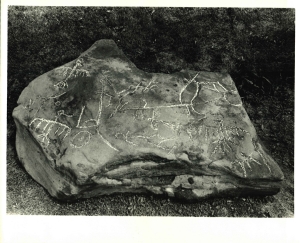
On June 25, an excavating crane removed a large sandstone submerged under fifteen feet of water and set it in a refuse pile. Two days later, the crane operator noticed a series of engravings on the stone. Soon, geologists from the U.S. Army Corps of Engineers, West Virginia University, and the W.Va. Geological and Economic Survey were summoned to inspect the discovery.
It was quickly determined that the carvings were Native American in origin. The images were in very good condition, having been spared from erosion or vandalism by being concealed underwater. The petroglyph likely stood on the riverbank and later became submerged as the Ohio River changed.
Because of its location and unintentional displacement, the petroglyph could not stay where it was found. There were also concerns that it could deteriorate if left out in the open. Multiple local and state entities sought to take possession of the boulder.
Ceredo Mayor Mose Napier quickly asserted the town’s claim to the petroglyph. He contacted Governor Arch Moore, Jr., and the two reached an agreement whereby Ceredo was awarded custody of the stone.
To prove that Ceredo would be a responsible steward of the petroglyph, Mayor Napier and other locals swiftly organized the creation of a museum to house it. A former water pump building on Main Street was reconfigured into the new Ceredo Historical Society Museum.
The petroglyph was so heavy that it required a truck and crane borrowed from a monument company in Ohio to transfer the stone to its permanent home. The museum opened in 1975, with the petroglyph as the main exhibit.
Ceredo’s petroglyph is one of several discovered and documented in West Virginia during the 1970s. A petroglyph is any rock with an image carved or engraved on it. As many as 60 may have been found in West Virginia since the 1700s, although many have since been lost or destroyed.
There are only 27 positively identified and documented petroglyphs in the state today. These include sites in Wayne, Cabell, Ohio, Hancock, Harrison, and Monongalia counties.
Archaeologists today believe that the Ceredo Petroglyph and others around the state were carved between 1200 and 1700 A.D. This would have been during the Fort Ancient culture, a civilization of Native Americans who inhabited much of the Ohio River Valley. The petroglyphs typically depict human and animal figures, animal tracks, and geometric shapes.
Despite years of study, it is still unclear what these petroglyphs' purposes were. They may have been used for religious or ceremonial activities. Or perhaps they marked transportation routes or the sites of important events. Early examiners of the Ceredo Petroglyph initially suggested that it may have denoted an ideal spot for people to cross the Ohio River.
In 1979, the West Virginia Geological and Economic Survey attempted to nominate the Ceredo Petroglyph to the National Register of Historic Places. However, with a few exceptions (such as for train locomotives), resources removed from their original location are automatically considered ineligible to be listed on the National Register.
Three other Native American carvings in West Virginia have been listed on the National Register — the Wildcat Branch Petroglyphs near Fort Gay, the Indian Cave Petroglyphs near Good Hope, and the Hamilton Farm Petroglyphs near Morgantown. Their locations are not disclosed to the general public to protect them from vandalism.
The Ceredo Museum is free and open to the public on most Tuesdays and Fridays from 9 a.m. to 4 p.m. Visitors can sign the guest book, chat with the friendly museum director, and ponder the mysteries of this remarkable stone.
Strange carvings greeted early West Virginia explorers

When pioneers and other explorers first ventured into what would become West Virginia, they encountered artifacts of a much earlier age — carvings, burial mounds, and stone walls, the origins of which natives could not explain with certainty. READ THE FULL STORY HERE.
Sign up for a FREE copy of West Virginia Explorer Magazine in your weekly email. Sign me up!
